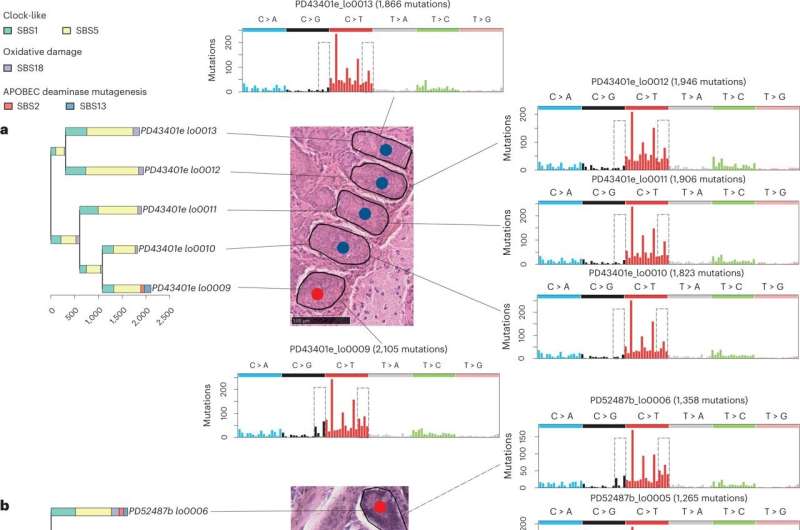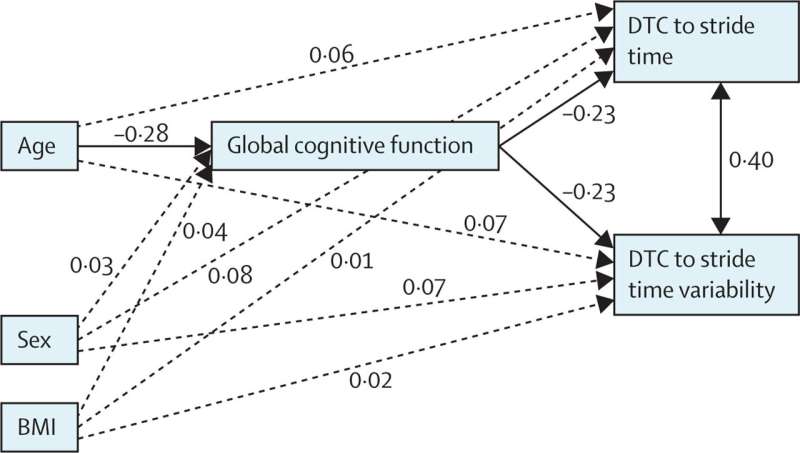
The primary complete learn about of somatic mutations in standard human small gut has been performed through researchers on the Wellcome Sanger Institute and their collaborators. The findings published that an enzyme named APOBEC1 is most likely answerable for two mutational signatures discovered in lots of cancers, SBS2 and SBS13, within the small gut.
Printed as of late in Nature Genetics, the analysis expands the individuals of the APOBEC circle of relatives connected to SBS2 and SBS13. As a result of APOBEC1 plays an important function in nutrient absorption within the small gut, it’s conceivable that top ranges of SBS2 and SBS13 within the small gut is also “collateral harm” brought about through the standard functioning of cells.
Somatic mutations collect in cells right through lifestyles. Despite the fact that the vast majority of those mutations are innocuous, some are identified to be desirous about illnesses comparable to most cancers. The organic processes that create mutations in standard cells, and the speed at which mutations happen, aren’t smartly understood.
However lately, researchers have taken good thing about technological advances to start characterizing the panorama of somatic mutations in standard human cells throughout many tissue varieties. Those research have known patterns of mutation, referred to as “mutational signatures,” which offer insights into what “standard” somatic mutation looks as if in several portions of the frame and the way they may be able to result in illness.
APOBEC is a circle of relatives of enzymes that edit DNA or RNA. Mutations brought about through the task of those enzymes are commonplace in lots of human cancers. Earlier research had occupied with APOBEC3A and APOBEC3B as the principle turbines of the mutational signatures SBS2 and SBS13 in human cancers.
On this new learn about, researchers got down to represent the mutational panorama of the small gut for the primary time. In all, 342 person small gut crypts from 39 folks had been complete genome sequenced on the Wellcome Sanger Institute.
Research of somatic mutations in those tissues known 3 mutational signatures present in most conventional human cells: SBS1, SBS5 and SBS18. Extra strangely, it published that mutational signatures SBS2 and SBS13 had been additionally commonplace, which can be uncommon within the massive gut and maximum different standard tissues.
“Earlier analysis at the SBS2 and SBS13 mutational signatures in people has usually occupied with APOBEC3A and APOBEC3B. Alternatively, our findings display that during standard small gut epithelium, APOBEC1 is the most likely offender. It may well be that the prime ranges of SBS2 and SBS13 on this organ are ‘collateral harm’ brought about through the prime ranges of APOBEC1 provide, which can be wanted for the small gut to do its standard task of soaking up and transporting vitamins,” says Yichen Wang.
Through retracing how every intestinal crypt advanced from a unmarried cellular into a number of thousand, the researchers found out basic details about somatic mutation within the small gut.
“Our research unearths that APOBEC mutations happen in small bursts, with a unmarried or very small choice of episodes right through the life of a person. The earliest example we discovered was once 4 years of age. The most likely reason for APOBEC mutations within the small gut appear to be because of cases throughout the cellular itself, reasonably than because of an exterior issue comparable to genotoxic metabolites produced through micro organism,” says Dr. Philip Robinson.
“Despite the fact that we’ve been finding out somatic mutation in standard human cells for a number of years now, we proceed to be stunned through what ‘standard’ looks as if within the other tissues of the frame. The invention that APOBEC1 lies in the back of two vital mutational signatures within the small gut, reasonably than its higher studied cousins, offers us purpose to revaluate our figuring out of APOBEC mutations extra broadly. Every now and then science throws up extra questions than solutions, however with every query we’re one step nearer to the reality,” says Professor Sir Mike Stratton.
Additional info:
Yichen Wang et al, APOBEC mutagenesis is a commonplace procedure in standard human small gut, Nature Genetics (2023). DOI: 10.1038/s41588-022-01296-5
Quotation:
‘Collateral harm’ from standard cellular operate would possibly purpose mutations that play a job in most cancers (2023, January 27)
retrieved 5 February 2023
from https://medicalxpress.com/information/2023-01-collateral-cell-function-mutations-play.html
This file is matter to copyright. Aside from any honest dealing for the aim of personal learn about or analysis, no
section is also reproduced with out the written permission. The content material is supplied for info functions most effective.
Supply Through https://medicalxpress.com/information/2023-01-collateral-cell-function-mutations-play.html



